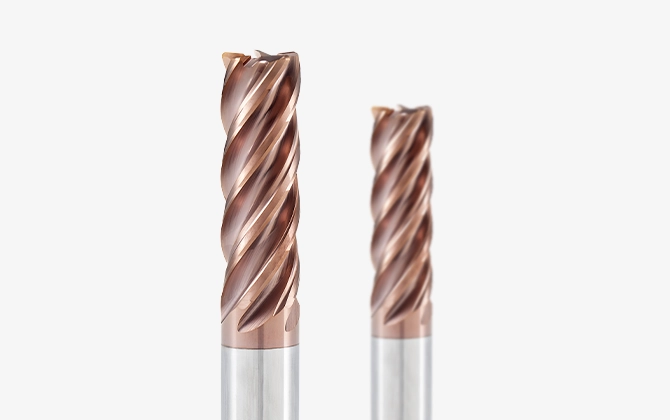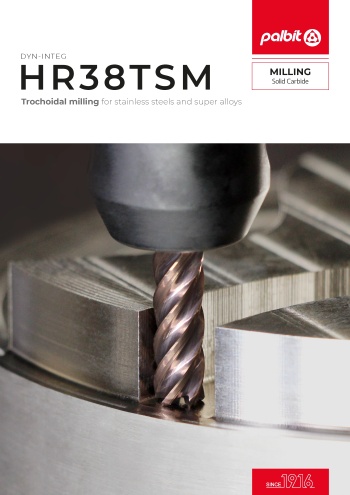Trochoidal Milling for Stainless Steels and Super Alloys

DYN-INTEG | HR38TSM
This innovative tool optimizes high feed rates with low radial engagement and high axial depth, leading to impressive material removal rates and cycle time reductions in challenging materials. In addition, this machining method facilitates consistent and gradual wear across the entire cutting edge, which contributes to a longer tool lifespan.
Features and Benefits
■ Optimized five-flute geometry for high efficiency milling on stainless steel and super alloys;
■ Unequal flute spacing provides vibration-free operations and improved tool life;
■ Improvement in process reliability;
■ Single tool for both roughing and finishing operations;
■ Available in two cutting lengths: 2 x DC and 3 x DC;
■ Ramping capability up to 3º;
■ New high-performance coating, PHF, for increased wear resistance;
Exotic materials. Extreme challenges.
What does it take to cut through the impossible?
Trochoidal Milling
One of the primary benefits of this approach is the ability to achieve higher material removal rates by optimizing the tool path and minimizing tool contact with the material. This leads to faster cutting speeds and shorter cycle times.
The HR38TSM end mill can cut depths up to three times its diameter in a single pass, allowing for deeper cuts without the issues commonly associated with conventional milling, such as excessive heat, vibration, tool deflection, and chip recutting. The intermittent cutting action in trochoidal milling reduces heat generation and cutting forces, extending tool life. Additionally, the dynamic tool path improves chip evacuation, preventing chip-related issues that can affect surface quality. This method also produces smoother surface finishes due to reduced vibrations during the machining process.
Moreover, trochoidal milling achieves high material removal rates even on machines with lower power capacities. This technique is also cost-effective, as it enables the same tool to create larger diameters than its cutting diameter, allowing it to cut various hole sizes and reducing the need for multiple tools, which helps lower production costs.

Tool Engagement Angle
Conventional vs Trochoidal
In climb milling, where the chip thickness is greater at the beginning of the cut and smaller at the end, using a lower tool engagement angle (we) results in a chip thinning effect. Since the thickness of the produced chips is smaller than what was originally programmed. This effect facilitates the chips evacuation.
The smaller the stepover (ae), the smaller the tool engagement angle (we) becomes. If we keep the tool engagement angle (we) constant throughout the machining process, the thickness of the chips will also remain constant. However, if the stepover (ae) is constant, the chip thickness will vary with the geometry of the workpiece.

Machining Processes
SHOULDERING
TROCHOIDAL MILLING
TROCHOIDAL SLOTTING
FINISHING
Product Range








